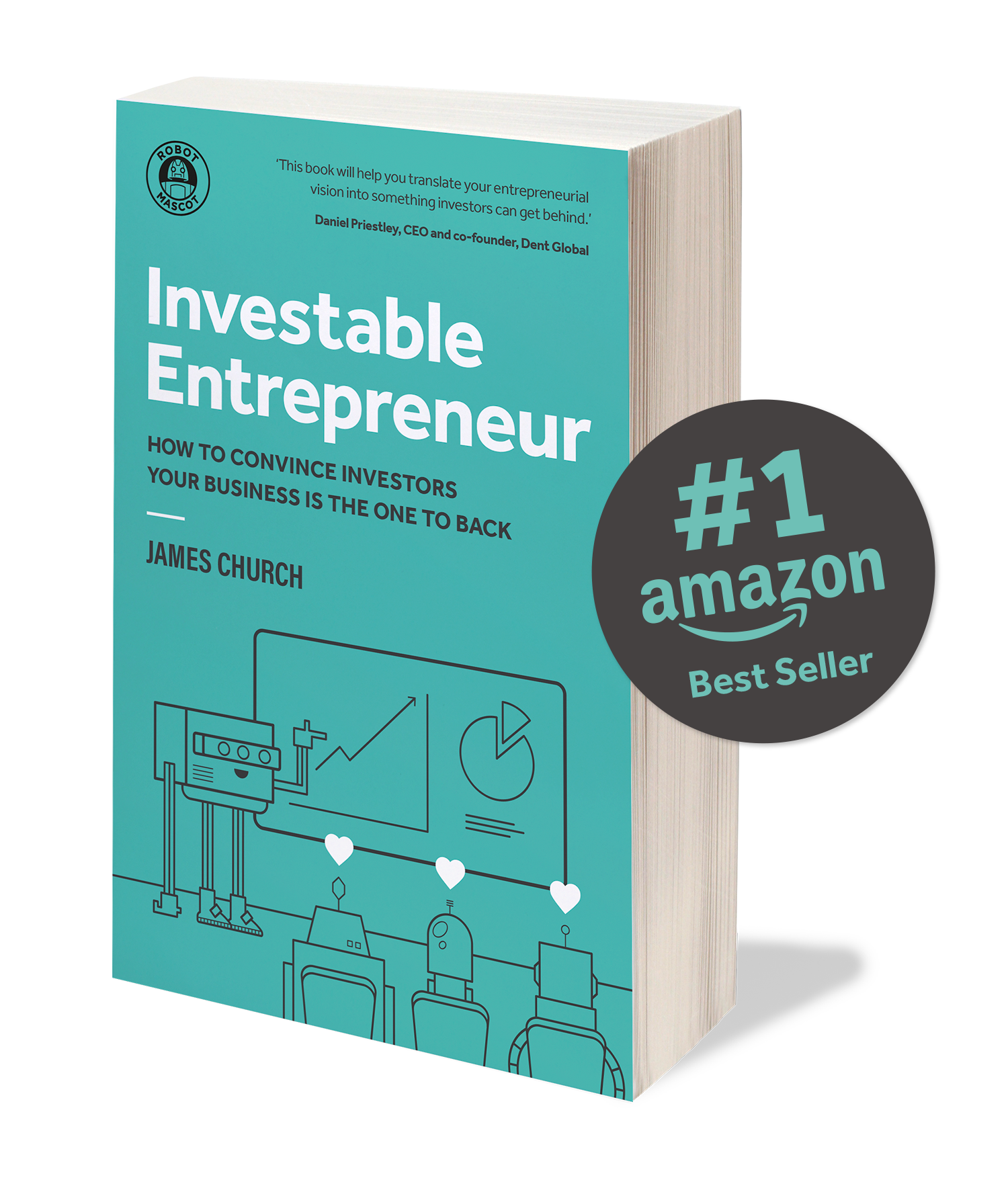

The Pitfalls of Undercutting in Your Startup Pricing Strategy
31st August 2023
Establishing an effective pricing strategy is critical for any startup aiming to thrive in a competitive market. While it may seem tempting to undercut the current competition as a means to attract customers and gain an initial foothold, this approach can have detrimental long-term consequences.
In this article, we will explore why undercutting is a flawed pricing strategy, particularly when pitching an idea that claims to be an improvement. We will also delve into the challenges of justifying such a strategy to investors and provide five valuable tips to help startups develop a more robust and sustainable pricing strategy.
The perils of undercutting
Undercutting the market with your startup pricing strategy may seem like a quick way to gain customers, but it often leads to several negative outcomes:
Unsustainable Margins
When undercutting prices, startups face immense pressure to maintain profitability. In the pursuit of market share, profit margins can dwindle, making it difficult to sustain operations, invest in growth, and deliver superior products or services.
Perceived Value Reduction
Lower prices can inadvertently signal lower quality, undermining the perception of value in customers’ minds. If your startup claims to offer an improvement, undercutting suggests that your product or service may not be as superior as advertised.
Difficulty in Scaling
Undercutting can attract price-sensitive customers who may switch to a competitor offering an even lower price. This customer base is less loyal, making it challenging for startups to scale and establish a solid foundation for growth.
Related: Tell-Tale Signs Your Brand Isn’t Working: #4 Price Bombing
How your startup pricing strategy can affect your ability to raise investment
When seeking investments, startups must convince potential investors of their ability to generate sustainable margins in the long run. Undercutting the market poses a significant challenge in this regard. Here are some key considerations to address when justifying your pricing strategy to investors:
Competitive Advantage
Emphasise the unique value proposition and differentiating factors that set your product or service apart from the competition. Highlight how these factors allow you to command higher prices without compromising customer acquisition or retention.
Target Market Analysis
Conduct a thorough analysis of your target market’s willingness to pay. Showcase market research that demonstrates your target audience’s recognition of the added value your startup offers and their willingness to pay a premium for it.
Cost Structure Optimization
Highlight how your startup optimises its cost structure, allowing for competitive pricing while maintaining healthy profit margins. Leverage technology, operational efficiencies, and strategic partnerships to demonstrate a sustainable cost advantage.
Scalability and Growth Potential
Present a clear growth strategy that outlines how your startup plans to expand its customer base, increase market share, and achieve economies of scale. Demonstrating the potential for rapid growth can instil confidence in investors regarding your ability to achieve competitive margins.
Pricing Flexibility
Emphasise your startup’s willingness and ability to adjust pricing over time. Assure investors that your pricing strategy is not static, and you will adapt to market dynamics while balancing profitability and customer satisfaction.
How to justify an undercutting strategy to investors
If you are sure that undercutting the market is the right strategic approach, and you have the research to back up this is what the market wants and needs, then you’ll need to focus on three things with investors to justify how you will deliver industry leading margins, at a reduced price point.
Focus on Efficiency and Operational Excellence
To justify to investors that your startup can achieve industry-leading margins while undercutting the market, emphasise your commitment to efficiency and operational excellence. Showcase how your streamlined processes, advanced technologies, and optimised supply chain management allow you to reduce costs without compromising quality.
Highlight specific examples of how you have leveraged automation, data analytics, or innovative approaches to achieve higher productivity and cost savings. Demonstrating your ability to operate efficiently will instil confidence in investors regarding your capacity to achieve healthy profit margins.
Leverage Economies of Scale
Undercutting the market doesn’t necessarily mean sacrificing profitability. Leverage economies of scale as a key justification to investors. Outline your growth strategy and explain how increasing sales volumes and expanding your customer base will enable you to achieve cost advantages.
As your operations scale up, you can negotiate better deals with suppliers, reduce unit production costs, and spread fixed expenses over a larger output. By illustrating the potential cost efficiencies gained through scaling, you can demonstrate your ability to achieve competitive margins despite undercutting the market.
Emphasise Value Engineering and Cost Innovation
Highlight your commitment to value engineering and cost innovation. Explain how you have meticulously analysed your product or service to identify cost-saving opportunities without compromising quality or functionality.
Showcase your ability to re-evaluate production processes, adopt technology, create IP, enhance service delivery methods to optimise costs while maintaining customer satisfaction. Provide specific examples of how you have successfully implemented cost-saving measures, improved efficiency, and reduced waste in previous roles.
This emphasis on value engineering and cost innovation will assure investors that you can achieve profitability even with competitive pricing.
Remember, when justifying your ability to achieve industry-leading margins while undercutting the market, it is crucial to provide tangible evidence and/or experience in achieving this previously in your career.
By showcasing your commitment to efficiency, scalability, and innovative cost-saving measures, you can instil confidence in investors regarding your startup’s potential for sustainable profitability and industry leading margins while delivering customers a lower cost.
Five Tips for Developing an Effective Startup Pricing Strategy
Undercutting the market is not the only way to price your product of service and achieve rapid adoption and scale. There is a numerous pricing strategies you can consider for your startup.
Value-Based Pricing
Set your prices based on the value your product or service delivers to customers. Conduct market research to understand your customers’ perception of value and ensure that your pricing aligns with their expectations. This approach allows for higher margins and fosters a stronger brand image.
Competitive Analysis
Study the pricing strategies of your competitors. Assess their strengths and weaknesses, and identify gaps in the market where your startup can position itself to offer unique value without resorting to aggressive undercutting.
Cost-Plus Pricing
Calculate the costs associated with producing and delivering your product or service and add a reasonable margin to determine the selling price. This method ensures that your pricing is grounded in your operational realities and helps maintain sustainable profitability.
Tiered Pricing
Consider implementing tiered pricing models that offer different levels of features or services at varying price points. This approach caters to customers with different needs and budgets while maximizing revenue potential.
Monitor and Adjust
Continuously monitor the market dynamics, customer feedback, and competitors’ pricing strategies. Regularly evaluate your pricing strategy and make adjustments when necessary to stay competitive while preserving your profit margins.
Summary
Crafting a pricing strategy that aligns with your startup’s goals and market positioning is crucial for long-term success. While undercutting the current competition may initially seem like a good strategic decision, it presents numerous challenges, including unsustainable margins, reduced perceived value, and scalability issues.
When pitching your startup to investors, it’s critical to justify how you can achieve industry leading margins. Undercutting the market with your pricing creates a red flag, and you’ll have to be very clear, and work extra hard, on demonstrating how you will improve your operational costs verses your competitors to achieve the same or better margins while delivering the product at a reduced cost.
By focusing on factors such as your competitive advantage, target market analysis, cost structure optimization, scalability, and pricing flexibility, you can in still confidence in investors and position your startup for sustainable growth.
In conclusion, a well-thought-out pricing strategy that takes into account your startup’s unique value proposition, target market, costs, and competitive landscape is vital for sustainable growth.
Avoid the pitfalls of undercutting and focus on offering superior value, optimizing costs, and maintaining healthy profit margins. By doing so, you can build a strong foundation for success and attract both customers and investors who recognise the true worth of your startup’s offerings.
If you would like to learn more about raising investment, grab your free copy of our best-selling book, Investable Entrepreneur. You can get a free copy here.
UP NEXT:
Business Plan For Investment: Why Entrepreneurs Without a Proper Business Plan Fail
Dealing With Investors: What It’s Really Like
My Investment Campaign Isn’t Working – What Am I Doing Wrong?
Exploring the Mind of a Founder: Why Investors Want to Understand Your Strategic Thinking
Investable Entrepreneur takes you through our winning methodology – the process we use to increase our client’s chances of raising investment by more than 30x.
“This book will help you translate your entrepreneurial vision into something investors can get behind.”
Daniel Priestley, CEO and founder, Dent Global and four times best-selling business author

Keep up to date with what we’re up to via email






Copyright ©Robot Mascot Ltd. All rights reserved.









